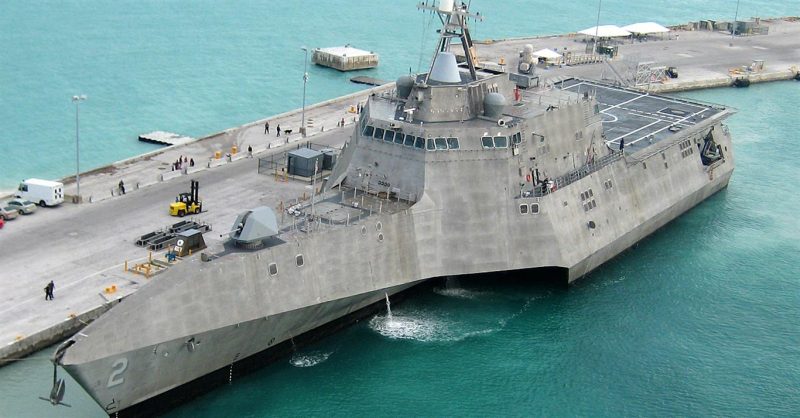A superstitious person might be forgiven for thinking the U.S. Navy’s littoral combat ship (LCS) program, and in particular, the USS Montgomery, an Independence-Class ship, is the victim of a poltergeist.
In its latest affliction, the Montgomery, in service less than two months, developed an 18-inch long crack in its hull, eight to ten feet above the waterline, while passing through the Panama Canal en route to San Diego from the Atlantic Ocean.
Since it was commissioned in September, the $360 million warships also had another mishap, only a week ago, that resulted in a fissure to its skin caused by a tugboat that collided with it while the ship was being towed to avoid Hurricane Matthew.
An inquiry into probable causes of the incident is in progress, wrote a spokeswoman for the Naval Surface Forces Pacific, in a statement. Previously, just a few days after the Montgomery was commissioned, seawater leaked into the ship’s hydraulic cooling system; then it lost one gas turbine later in the day.
The Navy announced in September there’ll be a major overhaul of the LCS program that’ll include classifying the first four vessels as testing ships. They’ll be limited to overseas placements for only emergencies.
Those statements came just under two weeks following the Navy’s revelation about breakdowns in two ships, the USS Coronado and the USS Freedom. These happened after the USS Milwaukee and the USS Forth Worth also mechanical failures.
The new placement plan isn’t a reaction to issues of breakdowns, said another Navy spokeswoman, CNN Politics reported.
The review was a complete examination of training, manning, and maintenance across the class, not just a reaction to one incident or one ship. The Navy always looks for methods to improve ship deployments and their employment, she explained.
